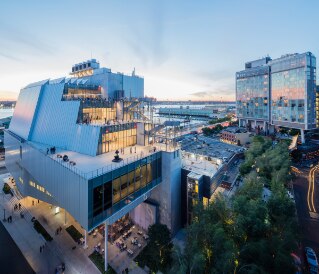
Bathed in light
Drawing from its more than 30 years of experience, SICIS introduces backlit pools in Vetrite, a patented solution that combines design, technology and function.
- Sponsored content
How are cities built in Africa? What did the planners learn from recent speculative bubbles in Spain, Ireland, China and the Middle East? At the Architekturgalerie München the recently ended exhibition “African Speculation” studied the phenomenon of wild urbanisation in the Black Continent. A catalogue of 100 new towns includes projects of more than 300 hectares, which according to their characteristics are divided into different categories: new national capitals; tourist enclaves; middle-class housing estates; new financial centers (CBDs); technology/industry-driven cities; luxury housing districts; social housing estates; redevelopments of existing fabric; and greenfield mega-cities.

 View gallery
View gallery
The exhibition curated by Christopher Marcinkoski and Javier Arpa Fernández, associate professor and lecturer at the University of Pennsylvania School of Design, deepens nine projects in detail, analyzing the rhetoric, the actors involved and the environmental impact. These plans are in fact often imposed without any regard for the ecologies of the places. The “African speculations” are an emblematic example of what Jason Moore called “Capitalocene”, the current global regime of environmental governance. According to the American geographer: “Capitalism does not have an ecological regime, but it is an ecological regime, that is a specific way of organizing nature”. The exhibition is necessary to warn about the possible political, social and environmental disasters that this development model is bringing.

 View gallery
View gallery















- Title:
- African Speculations
- Curated by:
- Christopher Marcinkoski and Javier Arpa Fernàndez
- Opening dates:
- 21 June – 13 July 2018
- Venue:
- Architekturgalerie München
- Address:
- Türkenstrasse 30, Munich

Design at the service of water
Combining minimalist design and innovation, Rubinetterie Treemme's W-Smart and W-Touch solutions are at the forefront of the industry, offering precise and intuitive water control.
- Sponsored content

















